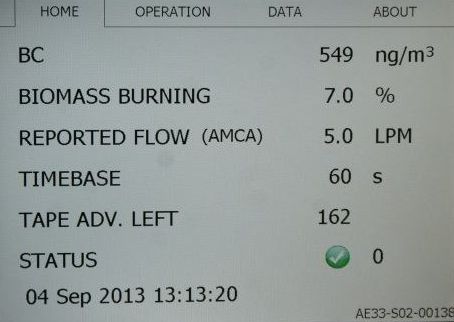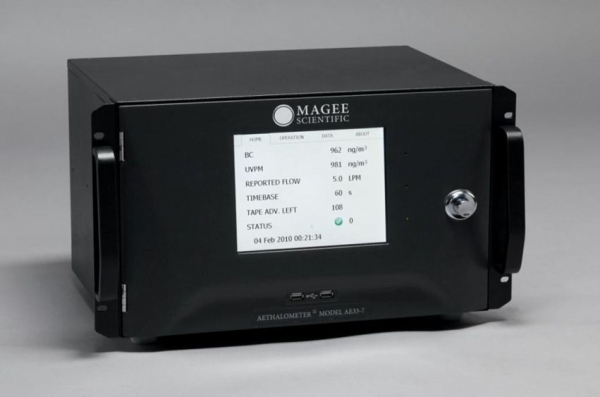Black Carbon Meter Aethalometer® Model AE33
The "Next Generation" Aethalometer AE33 with 7 Wavelengths at 1 Heart Measurement Frequency
BC "BlackCarbon" is used in many areas for the assessment of environmental pollution, in the report "Soot pollution in Switzerland measurements within the framework of the NABEL measurement report 2013" the introduction for the soot measurement is given:
For various reasons, the collection of reliable, comprehensive and long-term data on soot pollution in Switzerland is important for assessing air quality and for planning and monitoring the success of air pollution control measures:
- Soot is a carcinogen (diesel soot was classified as a carcinogen by the WHO Commission IARC in 2012), so the soot load must therefore be reduced to a tolerable level in accordance with the minimization ban. The Swiss Federal Commission for Air Hygiene (EKL) currently estimates the population-weighted mean value of soot pollution (in the form of elemental carbon, EC) at 1 μg/m3 . In order to ensure the protection of the population, a reduction to a value of 0.1 μg/m3 is necessary [EKL, 2013].
- Carbon black absorbs light and thus has an influence on the earth's radiation budget and thus on the climate. A reduction in soot pollution is therefore also important in connection with climate protection.
The report can be downloaded here: https://www.bafu.admin.ch/dam/bafu/de/dokumente/luft/externe-studien-berichte/russbelastung_inderschweiz.pdf.download.pdf/russbelastung_inderschweiz.pdf
The report of the Swiss Federal Commission for Air Hygiene EKL "Feinstaum in der Schweiz 2013" :https://www.ekl.admin.ch/de/dokumentation/publikationen/
Furthermore, the 7 wavelengths allow additional important information on aerosol properties to be evaluated, e.g. a source allocation can be made between black carbon from fossil fuel and from biomass combustion.

AE33 Display with BC value (Black Carbon) and proportion of
Biomass combustion (Biomass Burning)
Technical description
Dual jet device: The flow rate of the air to be measured is divided at different flow speeds between two surfaces on the filter belt. This optimizes the linearity of the measurement and provides a more accurate analysis depending on the filter load. Both filter surfaces and an unloaded surface are continuously photometrically analyzed with 7 wavelengths.
The real-time analysis is based on measuring the rate of absorption change of transmitted light due to the continuous collection of fine dust (aerosol) on a filter. The measurement is performed by simultaneously determining the light absorption of the aerosol at 7 wavelengths of 370, 470, 520, 590, 660, 880 and 950 nm. The fine dust is collected on a reinforced quartz fiber belt.
The belt is automatically transported when the user selectable load is reached, usually every few hours, depending on concentration and flow rate. The 10 meter roll is usually good for several months to one year depending on location and inlet. All functions are controlled by an integrated computer. Program and operating parameters are stored on a flash memory. Digital data can be read out via RS-232, Ethernet or USB.





